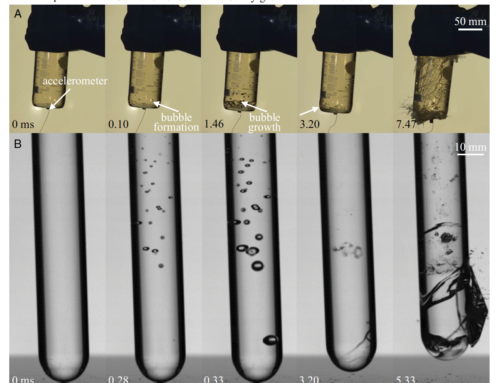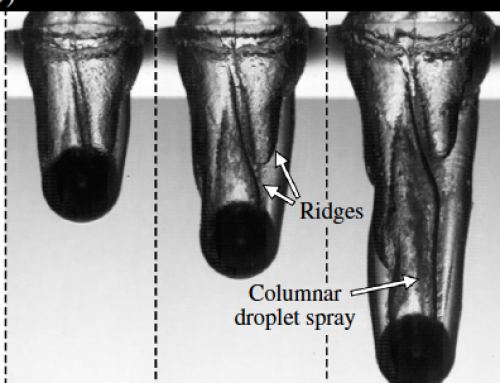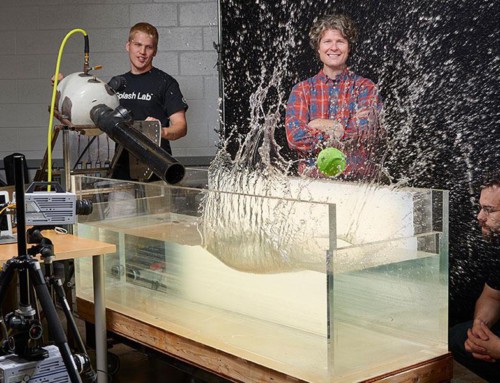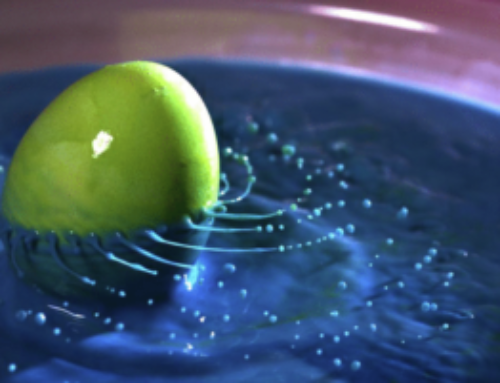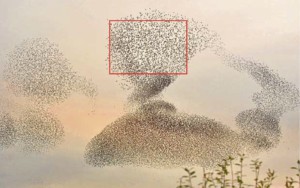
We are excited to announce that Dr. Truscott is a 2015 Office of Naval Research Recipient! The award is linked the work entitled Natural swarms and crowds: Observation and Modeling. This grant allows the Splash Lab to do utilize our 3D imaging techniques to unravel behaviors of swarms and swarming behavior of animals and humans. We will be developing new methods to observe and mimic the puzzling behavior that drives schools of fish or flocks of birds that swarm and move together in perfect synchronization. Developing these forms of swarming algorithms from the ground up would be daunting, but nature has already figured out how autonomous creatures can move together with striking efficiency in, for example, a shoal of herring or a murmuration of starlings.
Recently, there has been increased interest in using collective groups of autonomous vehicles to perform coordinated surveillance, search and rescue, environmental hazards modeling or coordinated evasion operations. Our observation techniques focus on kinematics and sensory cues. From that, we’ll develop models of the animals’ behavior and attempt to mimic them by implementing our models in swarms of small table robots. Our methods are bolstered by our ability to extract position and posture data from our 3D imaging techniques, which allow us to estimate what each individual is sensing. This informs our models especially as we work to understand what each individual within the group can or cannot sense.
“These recipients demonstrate the type of visionary, multidisciplinary thought that helps the U.S. Navy anticipate and adapt to a dynamic battlespace,” said Dr. Larry Schuette, ONR’s director of research. “The breadth of their research and combined value of awards underscore the significance the Navy places on ingenuity, wherever it’s harbored, and support the framework for a Naval Innovation Network built on people, ideas and information.”
This research is a big task for our group and will require hard work and bright minds. We have some graduate students already working on it, but we need more. If you are interested in working with us in this area, please contact Dr. Truscott.
We thought that this quote sums up the curious behavior of collective animal behavior: “Anyone who has seen the martins and swallows in September, assembling on the telephone wires, twittering, making short flights singly and in groups over the open, stubbly fields, returning to form longer and even longer lines above the yellowing verges of the lanes—the hundreds of individual birds merging and blending, in a mounting excitement, into swarms, and these swarms coming loosely and untidily together to create a great, unorganized flock, thick at the center and ragged at the edges, which breaks and re-forms continually like clouds or waves—until that moment when the greater part (but not all) of them know that the time has come: they are off, and have begun once more that great southward flight which many will not survive; anyone seeing this has seen at work the current that flows (among creatures who think of themselves primarily as part of a group and only secondarily, if at all, as individuals) to fuse them together and impel them into action without conscious thought or will: has seen at work the angel which drove the First Crusade into Antioch and drives the lemmings into the sea.” -Richard Adams, Watership Down
Media Coverage:
A great video of starlings murmuring. Link.


